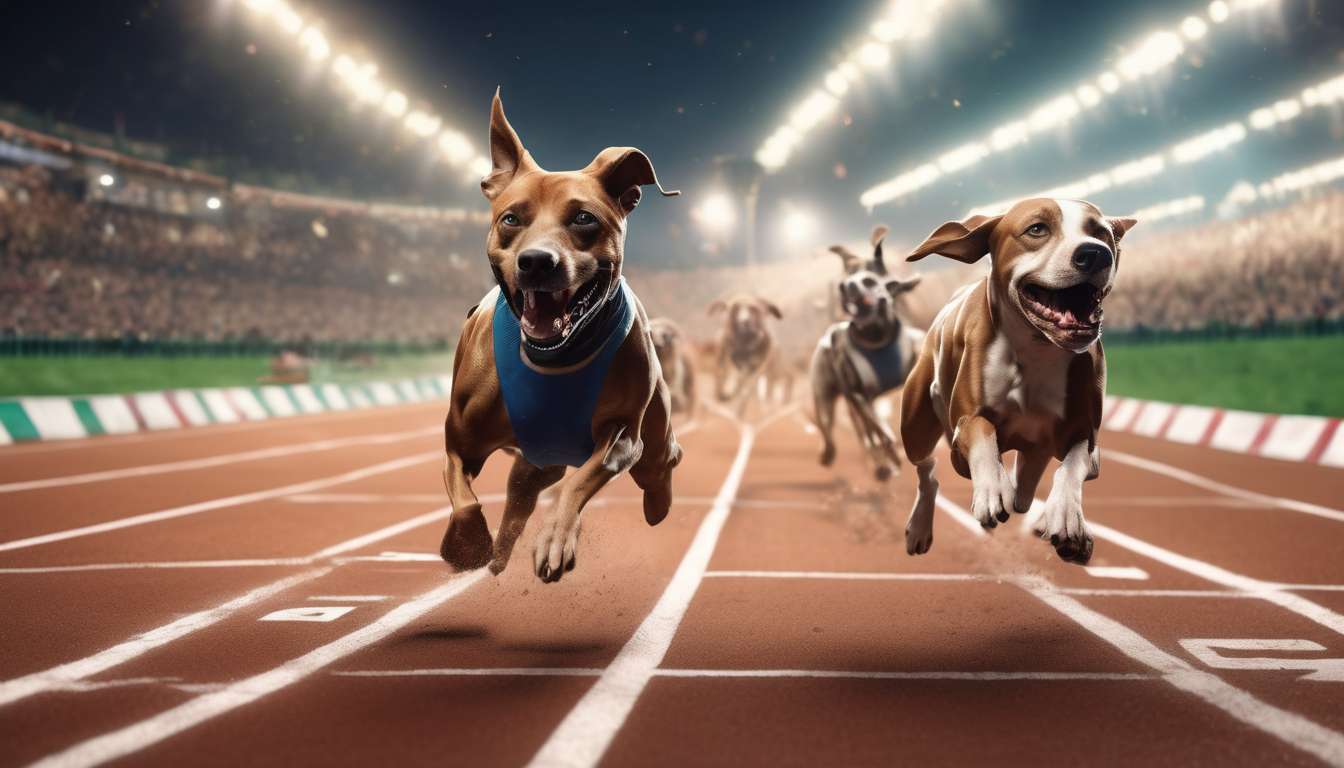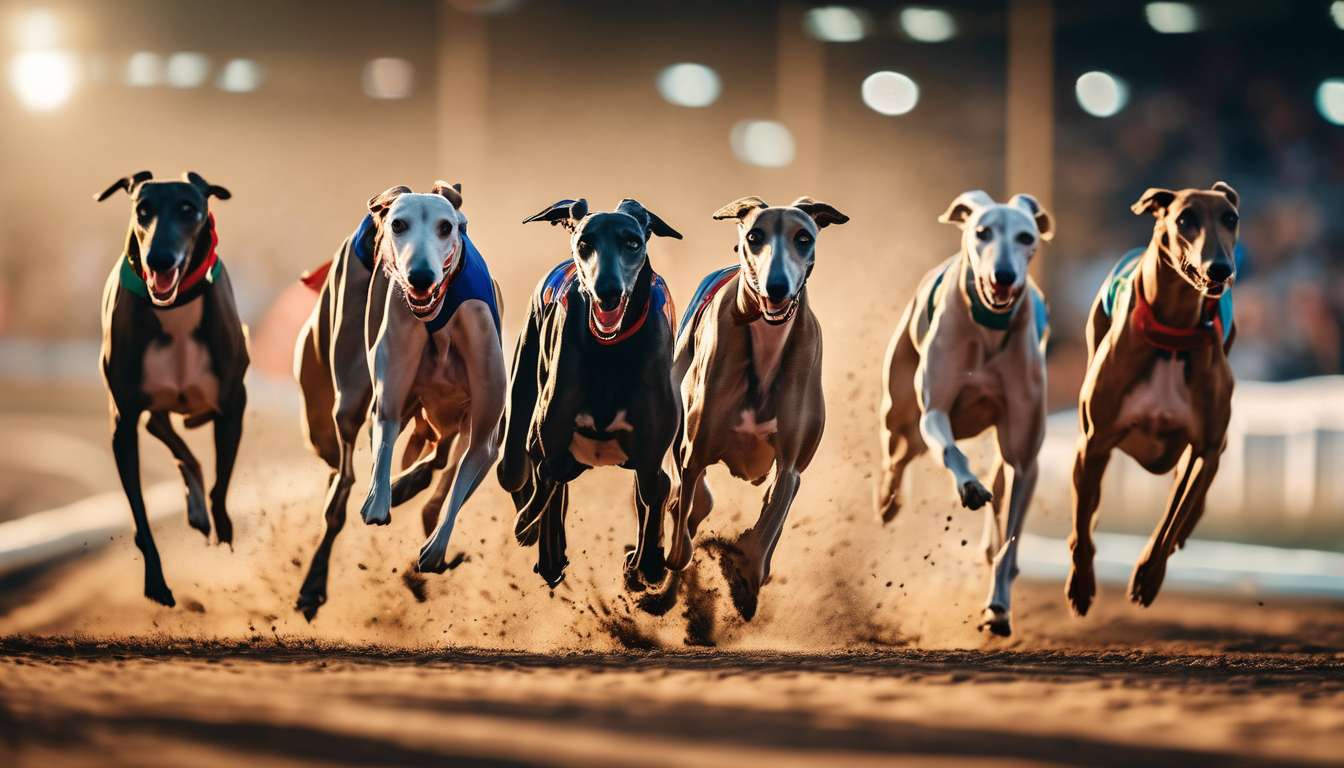In the fast-paced world of dog racing, we find ourselves constantly intrigued by the ever-changing dynamics of betting odds. As enthusiasts and analysts, we delve into the intricacies that influence these fluctuations, seeking to understand the underlying factors that shape the odds we see on the betting boards.
Together, we embark on a journey to uncover the nine pivotal elements driving these movements:
-
Performance History of the Dogs: Past performance can be a strong predictor of future success and heavily influences betting odds.
-
Track Conditions: The nature of the track, including its surface type and condition, can significantly affect a dog’s performance.
-
Expertise of Trainers: The skill and reputation of a dog’s trainer can sway bettors and impact odds.
-
Recent Weather Patterns: Weather conditions, such as rain or extreme temperatures, can alter race outcomes and thus affect odds.
-
Subtle Shifts in Betting Patterns: Changes in how people are betting can indicate insider knowledge or emerging trends.
Our collective curiosity propels us to dissect these components, providing insights that not only enhance our understanding but also inform our strategies.
As we navigate this dynamic landscape, we invite you to join us in exploring the fascinating world behind dog betting odds.
Dog’s Age and Experience
A dog’s age and experience directly influence its betting odds by impacting its performance and reliability. In dog racing, these factors are critical because they shape how we evaluate a dog’s potential on the track.
Younger dogs might have the youthful energy and speed but may lack the seasoned understanding that comes with experience.
Older dogs, with a history of races, bring valuable performance data that help us assess their reliability.
When we look at betting odds, age and experience create a narrative.
- We can’t help but root for the underdog with a rich racing past.
- We might support the young contender promising a fresh burst of speed.
By analyzing performance data from previous races, we feel connected to the story each dog tells.
- We see how odds shift, reflecting our collective anticipation and excitement.
- We understand that these dynamics make the betting experience more complex and engaging.
This draws us into a community that appreciates the nuances of dog racing.
Health and Fitness Levels
A dog’s health and fitness levels significantly impact its ability to perform well in races, influencing our betting decisions. In dog racing, a fit dog is more likely to perform at its peak, making it a strong contender.
Assessing a dog’s health involves several factors:
- Monitoring its diet
- Evaluating muscle condition
- Checking for signs of injuries or illnesses
These factors are crucial because they directly affect the betting odds. Healthy, fit dogs often have more favorable odds due to their enhanced potential to win.
We rely on performance data to gauge a dog’s current health status. Analyzing recent races and training sessions can offer valuable insights into a dog’s fitness level.
As a community passionate about dog racing:
- Sharing accurate health-related information strengthens our collective understanding.
- Focusing on health and fitness elements ensures our betting choices are informed and strategic.
By concentrating on these aspects, we enhance our decision-making process and ultimately improve our chances of success in dog racing bets.
Historical Race Performance Data
Gaining Insights from Historical Race Performance Data
We can gain crucial insights into a dog’s racing potential by analyzing its historical race performance data. In dog racing, past performances serve as a guiding light, helping us understand how a dog might fare in future races.
By examining a dog’s previous races, we can identify patterns, such as:
- Consistent wins on certain tracks
- Performance against specific competitors
This analysis allows us to make informed predictions about the dog’s capabilities, directly influencing betting odds.
Community Engagement and Data Sharing
Our community of dog racing enthusiasts often shares performance data to build a collective understanding of racing dynamics. We look at factors such as:
- Average speed
- Race distances
- Finishing positions
All these factors contribute to the dog’s perceived potential.
Impact on Betting Strategies
Betting odds shift as new data emerges, reflecting changes in the dog’s expected performance. By staying informed and sharing insights, we strengthen our betting strategies and foster a sense of camaraderie. Together, we can navigate the intricate world of dog racing with greater confidence and accuracy.
Odds Set by Bookmakers
Bookmakers set odds by analyzing a multitude of factors to predict each dog’s chances in upcoming races. This process involves more than just numbers; it’s about understanding the nuances of each dog’s past performances and their potential to excel on race day.
Key factors considered by bookmakers include:
- Historical performance data
- Current form of the dog
- Track conditions
- Competition levels
- Race times
As a community of dog racing enthusiasts, we appreciate the complexity behind these betting odds. Bookmakers meticulously review performance data to ensure the odds reflect reality as closely as possible. This creates a sense of fairness and engagement that we all value.
Understanding how bookmakers set odds allows us to make informed betting choices. It’s this attention to detail that makes us feel connected as a community, bound by our collective love for the sport and the thrill of the race.
Public Perception and Media Influence
Media Influence on Public Perception
Many factors can sway public perception and media narratives, shaping how we interpret the odds and the excitement around each race. As fans of dog racing, we often find ourselves influenced by the stories and highlights shared by media outlets.
- When a particular dog is spotlighted, its betting odds can shift dramatically.
- Public sentiment tends to rally around these narratives, creating a sense of shared anticipation and camaraderie among us.
Role of Performance Data
Performance data plays a crucial role too.
- When media reports highlight a dog’s impressive track record or recent victories, it can amplify our confidence in placing bets.
- We naturally want to back a winner, and when the media echoes this sentiment, it feels like we’re part of an informed and enthusiastic community.
Cycle of Influence
In essence, media influence and public perception form a cycle that not only impacts betting odds but also strengthens our connection to the world of dog racing.
It’s this shared experience that keeps us coming back for more.
Behavioral Traits and Temperament
Understanding the behavioral traits and temperament of racing dogs gives us valuable insights into their potential performance on the track.
Behavioral Analysis:
- When we analyze a dog’s behavior, we’re not just gauging its speed or agility.
- We delve into how it reacts under pressure, how it handles competition, and how its temperament might influence its racing day decisions.
Importance in Dog Racing:
In dog racing, these insights are crucial because they can significantly affect betting odds. A dog that consistently shows focus and calmness might be more reliable compared to one that’s erratic or overly aggressive.
Performance Data Insights:
- When we examine performance data, we notice patterns in how certain temperaments correlate with successful outcomes.
- By doing so, we align ourselves with a community of knowledgeable enthusiasts who understand that betting isn’t just about luck; it’s about making informed decisions.
Community and Strategy:
We all seek to belong to a group that values understanding and strategy, and examining these traits is a key part of that shared pursuit.
Competition Strength and Lineup
Evaluating the Strength of Competition
In the thrilling world of dog racing, understanding how each dog stacks up against its competitors can significantly impact betting odds. Evaluating the strength of the competition and the lineup’s dynamics is essential for predicting outcomes and refining our betting strategies.
Analyzing Performance Data
We dive deep into performance data, scrutinizing past races and current form. This involves:
- Reviewing each dog’s speed
- Assessing stamina
- Analyzing racing history
The synergy between these elements and the competition level influences the odds.
Monitoring Lineup Changes
By keeping an eye on any lineup changes, whether due to injuries or strategy tweaks, we’re better equipped to anticipate shifts in the odds.
Community and Shared Insights
This is a collective endeavor, where sharing insights strengthens our community and enhances our chances of success. Our shared passion for dog racing brings us together, and by leveraging this knowledge, we bolster our betting strategies.
Conclusion
Let’s continue to support each other in navigating the complexities of dog racing with confidence and skill.
Betting Volume and Market Dynamics
Understanding Betting Volume and Market Dynamics
As we delve into betting volume and market dynamics, recognizing how our collective wagers influence odds is crucial for making informed bets.
Impact of Betting Volume on Odds
In dog racing, the sheer volume of bets can cause fluctuations in betting odds, creating opportunities to find value. By analyzing performance data, we can anticipate how the market might react to:
- A dog’s past performance
- Injuries
- Recent improvements
Adjustment of Odds
When we place our bets, the odds adjust based on the perceived strength of each dog, influenced by the demand in the betting market. Key dynamics include:
- Popular dogs with strong performance data tend to attract more bets, leading to shorter odds.
- Underdogs might offer longer odds and potential higher returns.
Community Influence and Strategy
This dynamic creates a sense of community as we collectively shape the betting landscape. By staying informed about:
- Betting volume
- Market trends
We can enhance our strategies, ensuring we’re part of a knowledgeable community making smarter wagers in the exhilarating world of dog racing.
How do external environmental factors, such as weather conditions, affect dog betting odds?
When it comes to dog betting odds, external environmental factors like weather conditions play a significant role.
Changes in weather can impact track conditions, affecting how dogs perform in a race. As a result, odds may shift based on predictions of how the weather will influence the race outcome.
Understanding these factors can help us make more informed betting decisions and adapt to the dynamic nature of dog racing.
Key Points to Consider:
-
Impact of Weather:
- Rain can make tracks slippery or muddy, potentially slowing down dogs or favoring those with more traction.
- Hot weather might affect the stamina and speed of dogs differently than cooler temperatures.
-
Adapting to Changes:
- Monitor weather forecasts and consider how different conditions might influence specific dogs or breeds.
- Adjust betting strategies accordingly based on the predicted impact of weather on race outcomes.
By taking these elements into account, bettors can enhance their chances of making successful and informed wagers.
What role do training methods and the trainer’s reputation play in influencing betting odds?
Training methods and the trainer’s reputation significantly impact betting odds.
A well-regarded trainer known for successful techniques can attract more bets, leading to lower odds for their dogs.
Conversely, poor training methods or a questionable reputation may cause odds to increase as bettors lose confidence.
Therefore, understanding the trainer’s influence on performance is crucial when analyzing dog betting odds and making informed decisions.
How can unexpected events during a race impact the odds and betting outcomes?
When unexpected events occur during a race, such as a sudden fall or a surprising burst of speed from an underdog, the odds and betting outcomes can shift dramatically.
These unpredictable moments keep us on the edge of our seats and play a significant role in influencing the final betting results.
It’s these thrilling twists and turns that make dog racing such an exciting sport to watch and bet on.
Conclusion
When you’re looking at dog betting odds movement, remember that several factors play a role:
-
Age, Health, and Past Performance: These attributes directly impact a dog’s capability in a race.
-
Bookmaker Odds: Bookmakers set initial odds based on various analyses, and these can shift over time.
-
Public Perception and Behavior: How the public views a particular dog can influence betting patterns and odds.
-
Competition Strength: The caliber of the dogs competing can affect the odds for each participant.
-
Betting Volume: The amount of money wagered on the race can cause odds to fluctuate.
Understanding these influences can help you make more informed bets and increase your chances of success.
Keep these factors in mind next time you’re placing a wager on a dog race!




